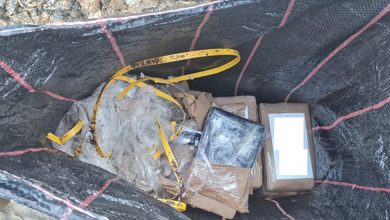What to Expect as Ski Areas Head Into Another Pandemic Season

Early last February, Michelle Harris, a physical therapist from Erie, Colo., planned a weeklong ski trip to Jackson Hole, Wyo., later in the month. She knew she needed to make reservations with her Ikon Pass, but when she checked online, all the February slots were already booked, thanks to pandemic-induced capacity restrictions and a particularly snowy February. Ms. Harris went anyway, knowing she had a place to stay with friends and intending to backcountry ski near Jackson until a last-minute spot to ride the lifts opened up.
It never did.
“I didn’t plan several months in advance,” said Ms. Harris. “And there was no spontaneity available.”
The good news this winter: Most resorts have resumed running chairlifts, trams and gondolas at full capacity and done away with pass-holder reservations for the slopes (though Jackson Hole and Taos Ski Valley in New Mexico still require Ikon pass-holders to reserve slots). Additionally, masking up outside and social distancing have mostly been eliminated, so the outdoors part of the ski experience resembles the carefree, pre-Covid days rather than last year’s fraught atmosphere.
Perhaps the biggest story is the benefits that have evolved from pandemic-induced measures, like less time needed in lift ticket and rental lines, more grab-and-go food at the mountain and new outdoor dining areas that reduce crowds. Several resorts have also chosen to actively manage daily skier numbers, after determining that fewer people on the mountain at once translated to better guest experiences last winter. And the new residents that have flocked to mountain towns may even alter traditional skier visitation patterns.
But all that doesn’t mean that skiers can — or should — be as spontaneous as they may have been before the pandemic. Policies may be less restrictive this winter, but they are also less uniform across resorts, making advance preparation essential. “This year’s Covid protocols really focus on the indoors experience,” said Sara Lococo, a Vail Resorts spokeswoman. At many — but certainly not all — areas, that means mask requirements inside; some will even require proof of vaccination to dine at on-mountain restaurants, including all 34 of Vail Resorts’ ski properties in North America.
If there’s a single piece of advice resorts are communicating to their guests this season, it’s to know before you go, a refrain that may be ingrained by now. Even if you plan to visit the same ski area early in the season and again later on, pointed out Molly Mahar, the president of the trade association Ski Vermont, Covid protocols may change in between, depending on local and state health regulations.
The great outdoors
From a purely skiing perspective, ski-area operations are back to normal — an especially welcome change among employees who had to enforce mask requirements last winter. “Resort workers are excited not to have to bug people about masks,” said Nathan Rafferty, president and chief executive of the trade group Ski Utah. “It’s a huge relief.”
Additionally, with lifts now loading at standard capacity and “ghost lanes” — used to space apart lift lines — a thing of the past, last year’s longer-than-usual wait times should recede.
Lessons, too, return to a traditional format, with both private and group options once again available, and specialty clinics back on the menu.
While skiers no longer need to mask up in the lift line, a handful of resorts still require masks on gondolas, like Utah’s Deer Valley. And a few have hybrid policies. At Jackson Hole, for example, tram riders must wear masks while gondola riders don’t have to. California’s Mammoth doesn’t require passengers to wear masks in its two gondolas — unless unrelated groups of skiers share a car.
After skiing at Keystone, Colo., when it opened on Oct. 22, Vail Resorts’ Ms. Lococo relayed the general vibe. “Not only did it feel really good to get back on snow, but everyone is looking forward to a more normal season this year.”
Managing crowds inside
It’s a different story indoors. Policies vary from mountain to mountain as to whether masks are mandated or merely encouraged. And some split the difference, like Winter Park in Colorado, which requires masks for unvaccinated guests and promotes them for others.
Last winter’s concept of using one’s car as a base lodge still holds true, as ski areas aim to reduce congestion in the real base lodges. Waterville Valley in New Hampshire created ski trails from the base area to its parking lots so guests could more easily reach their cars throughout the day. Instead of letting skiers stash bags under tables and benches in the lodge, many areas have installed more quick-access indoor lockers and created outdoor storage areas, said Olivia Rowan, the publisher of Ski Area Management magazine. Idaho’s Sun Valley, for example, implemented outside bag storage at its River Run base area.
Measures to spread out skiers at traditional pinch points like on-mountain restaurants have become even more important. “Covid made us take a very sharp look at managing the flow of people,” said Mr. Rafferty of Ski Utah.
In fact, many areas with only a few restaurants, like Utah’s Powder Mountain, didn’t even open their dining areas last winter. “We were very, very conservative,” said a Powder Mountain spokesman, JP Goulet. This season, indoor dining will take place once again at resorts across the board, with most at full capacity, though Powder Mountain will continue its conservative approach with limited seating. Other areas are counting on guests to take advantage of the increased outdoor dining options added last winter. Vail Resorts aims to reduce crowding by requiring skiers to book a slot at any of its on-mountain restaurants, up to 24 hours in advance, via an app introduced last season.
By also requiring proof of vaccination from those ages 12 and up to dine on-mountain, whether full-service or cafeteria-style, Vail Resorts has one of the most comprehensive safety policies (proof is not required to use restrooms). Taos, too, mandates that guests be vaccinated to eat at most resort-owned restaurants; skiers in Aspen will need to show proof of vaccination only at full-service dining spots on the mountains.
As for the staffers helping guests indoors, those working for employers like Vail Resorts, the Aspen Skiing Company and Snowbird, Utah, among others, must be vaccinated. At the very least, most ski areas that don’t require employee vaccinations will conduct regular testing.
North of the border
Skiers can expect more caution at Canadian resorts. Even though proof of vaccination is required to enter the country, provincial health guidelines for Canadians and international travelers alike dictate many ski area policies this winter.
Resorts of the Canadian Rockies, which owns Fernie Alpine Resort and Kicking Horse in British Columbia and Mont Sainte-Anne in Quebec, among others, announced that skiers (ages 12 or 13 and older, depending on the resort) will need to show proof of vaccination to ride the lifts, as did Quebec’s Tremblant (ages 13 and older).
Alberta resorts like Lake Louise, Mount Norquay and Banff Sunshine will require vaccination proof, or a recent negative test (P.C.R. and rapid test results accepted), not only to enter most indoor spaces and take ski lessons, but also to ride shuttles to the mountains.
Sun Peaks in British Columbia — along with Whistler Blackcomb, which is part of Vail Resorts — requires proof of vaccination to dine at restaurants. Meanwhile, Sun Peaks’ ski lessons will continue to operate at smaller-than-usual group sizes, and masking and physical distancing in lines and on lifts is still strongly encouraged.
A better ski experience
Some of last winter’s pandemic-related steps, especially those related to food service and outdoor dining, were so well received that resorts plan to implement them long term. In addition to the convenience of grab-and-go food, think heated patios, windscreens and multiple fire pits — amenities that allowed skiers to more comfortably experience the mountain environment they ostensibly came for.
“Ski areas really adapted, with expanded outdoor venues and food trucks and leaning in on tech so you could order lunch while you’re still on the lift,” said Ms. Rowan. Mobile apps at resorts from Sugarbush, in Vermont, to California’s Mammoth allow skiers to place a food order from anywhere, then pick up their meals at an on-mountain restaurant. And in Colorado, there’s Steamboat’s Pizza Ranger — a kitted-out snow cat that delivers pre-ordered pies at an on-mountain pickup spot. It proved such a hit that it’s returning this season during events, and possibly at other times.
The pandemic also accelerated the use of other technology that streamlines logistics. A couple of years ago, Vermont’s Killington and Pico had started to test outdoor pickup boxes, which allow skiers to bypass the ticket window by printing out pre-purchased lift passes with the scan of a bar code. Last year, the resort quickly installed 17 of the boxes, with more added for this winter. Other resorts have followed suit, including Sunday River in Maine, Aspen and Copper Mountain in Colorado, Sierra at Tahoe in California and Mount Bachelor in Oregon.
Before Covid, resorts encouraged skiers to buy lift tickets and book lessons and rentals online, a trend that continues to gain traction. The efficiency — and reduction in people milling about — appeals even more during a pandemic. Smaller resorts, in particular, have found ways around the traditional morning base-lodge lines. White Pass in Washington texts guests when a rental service rep is available to help. Pennsylvania’s Blue Mountain Resort eliminated ticket windows outright, offering lift pass and rental purchases online only.
Another pandemic byproduct: less crowding on the slopes. A few resorts, like Utah’s Deer Valley and Powder Mountain, and Vermont’s Magic Mountain, have capped daily lift ticket sales for years. But as other areas introduced capacity limits last winter — whether through reservations, fewer people on lifts or parking restrictions — a realization set in. At Jackson Hole, “we found it to be a better skiing experience,” said Eric Seymour, a spokesman for the resort. “And the snow lasted longer.”
Jackson Hole continues to actively manage skier numbers by limiting ticket sales during busy periods (a few days in late December are close to selling out, according to the resort’s website) and now requires Mountain Collective pass-holders to reserve spots. The resort also started running three of its lifts a half-hour earlier last year to spread out skiers across the mountain.
Likewise, after a cap on day tickets last winter provided a greatly enhanced skier experience at Vermont’s Mad River Glen, said a ski area spokesman, Ry Young, the resort decided to cap season passes, too — they’ve already sold out.
Sun Valley, Idaho, also began more closely monitoring skier visits last year, with an eye toward ensuring the ability to physically distance in lift lines and in lodges. Now, even with loosened restrictions, the resort will limit ticket sales, if necessary, to prevent overcrowding during peak times.
At Utah’s Alta and Snowbird, both located near the top of the notoriously traffic-congested Little Cottonwood Canyon, Covid catalyzed parking adjustments to better serve guests. Last winter, Snowbird managed skier numbers by requiring parking reservations; capacity is back to normal this winter, but some skiers valued the convenience of a guaranteed spot so much that the resort now offers reservations, for a fee, in addition to its free, first-come, first-serve lots.
Meanwhile, Alta — where parking spots are far fewer — ended up having to turn away guests on multiple Saturdays in a row last winter as lots filled up. Now, the resort requires reservations and a fee to park on weekends and holidays. The hope is that more skiers will use public transit and car pool, and that no one will drive up to the area only to be turned around.
Notably, a few smaller resorts not far from large population areas — Blue Mountain, Wachusett Mountain near from Boston and Mount Hood Meadows, outside of Portland, Ore. — started selling tickets last winter for specific blocks of time throughout the day to help disperse skiers. A similar dispersal could happen organically at other ski areas. Here’s why: Though the pandemic-driven influx of new mountain town dwellers may translate into more people on the slopes — Utah, for example, had a record number of skier visits last winter — many of those transplants, as remote workers or retirees, have the flexibility to ski whenever they want.
In Utah, in spite of busy weekends, more skiers last season opted to visit resorts midweek and in the afternoon than previously, said Mr. Rafferty. “More people, me included, chose to ski at different hours. We’ll see people become more creative about when they choose to ski.”
Of course, on a good powder day, all bets are off. Said Mr. Rafferty: “The model that’s not broken is that people ski when it snows.”
Follow New York Times Travel on Instagram, Twitter and Facebook. And sign up for our weekly Travel Dispatch newsletter to receive expert tips on traveling smarter and inspiration for your next vacation. Dreaming up a future getaway or just armchair traveling? Check out our 52 Places list for 2021.




